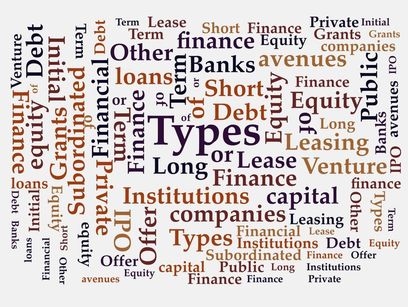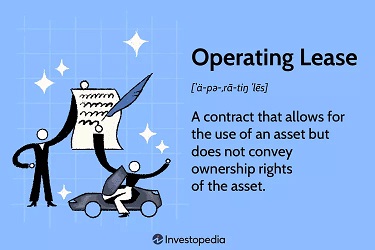Types of Finance
Types of Finance - Debt, Equity, Lease
Types of Finance for Businesses in Pakistan - Debt, Equity, Lease, and Alternative Financing Options
Understanding the types of finance available for businesses is crucial for entrepreneurs and business owners at every stage. Whether you're starting a new venture, scaling up, or simply stabilizing operations, the way you finance your business can make all the difference. In Pakistan, financing methods are generally categorized into three broad types:
- Debt Financing
- Equity Financing
- Lease Financing
Let’s explore each of these, along with other lesser-known but effective options like Ballot Committees and Grants.
Types of Finance - Debt Financing
1. Debt Financing
Debt financing is the most commonly used form of business finance in Pakistan. It involves borrowing money from a bank or financial institution that must be repaid over time with markup (profit or interest). This structure allows you to retain ownership of your business while accessing the funds you need.
Types of Debt Financing:
- Term Loans: These loans typically range from 1 to 5 years. They are often used for purchasing machinery, upgrading infrastructure, or other long-term investments.
- Short-Term Loans: These are generally for a period of up to one year and are used to cover immediate business needs like inventory or working capital.
- Running Finance / Working Capital Finance: This is a revolving credit facility where the business only pays interest on the amount actually used, making it an ideal option for managing cash flow fluctuations.
Debt financing requires a repayment plan, and failure to repay can affect credit ratings or lead to legal complications. Lenders also often ask for collateral to secure the loan.
 Types of Finance
Types of FinanceTypes of Finance - Lease Financing
Lease Financing
Lease financing is typically used for acquiring assets such as vehicles, machinery, or equipment without making a large upfront investment. The tenure of lease agreements usually ranges between 3 to 5 years. There are two main types of lease financing:
Finance Lease:
A finance lease operates similarly to a long-term loan. The lessee pays monthly or quarterly rentals, which include both principal and profit components. Ownership of the asset remains with the lessor until the end of the lease period, after which it is transferred to the lessee.
Operating Lease:
In an operating lease, the ownership of the asset always remains with the lessor. The lessee uses the asset for a fixed period and returns it after the lease ends. This type is best suited for businesses that need temporary access to assets or plan to upgrade regularly.
Lease financing is a great way to preserve working capital while still accessing essential business tools and infrastructure.


Types of Finance - Equity Finance
Equity financing involves raising capital by selling shares of the business to investors, which may include founders, friends, family, angel investors, or venture capitalists. Unlike debt, equity financing doesn’t require repayment—but it does involve sharing profits.
This method is especially useful for startups and women-led enterprises where initial investment might be limited. In such cases, pooling resources from family or community can be a smart move.
Advantages of Equity Financing:
- No repayment pressure
- Can attract strategic partners
- Ideal for businesses with growth potential
However, raising equity capital requires strong business planning and the ability to persuade investors of your enterprise’s potential. While venture capital is still underdeveloped in Pakistan, there are a few emerging funds and platforms supporting startups.
Equity finance is what the owners of the business invest from their own pocket. This is the best for all times to come. There is no cost to this kind of financing which means you don't have to pay interest on it. However, it becomes a costlier option because now you have to share the profit earned with your sponsors/financiers if you have them with you. For women owned enterprises with smaller initial capital outlay, this works out very well with friends and family members either contributing towards the business or by lending.
Raising finance through equity requires much harder efforts as you have to be able to convince the investors that your business proposition will give good returns and has a good market potential. You can get investment in your business once you have run the enterprise for some time and have performed well. In Pakistan there are very few institutions from where venture capital can be raised for start-ups.
Going Public – IPOs:
If your business grows substantially, you may consider an Initial Public Offering (IPO)—listing your company on the Pakistan Stock Exchange (PSX) - There's a separate board for listing of Small and Medium Enterprises (SMEs). An IPO allows you to raise significant capital and provides an exit route for early investors. However, it also brings strict regulatory requirements, so it’s crucial to establish solid governance practices beforehand.
Types of Finance - Security or Collateral Requirement
Security or Collateral Requirements
Banks and financial institutions typically lend against cash flow, but they also require collateral or security—tangible assets like property, inventory, or equipment—that can be liquidated in case of default. However, collateral alone does not guarantee loan approval; the borrower must also demonstrate a clear ability to repay through business income.
Banks first want to recover their money loaned to you through your income and only as a last resort use security to recover any defaulted amount.
Types of Finance - Choosing the Right Finance by Business Stage
The age and growth stage of your business significantly impact your financing options:
- Startup Phase: Equity from founders, friends, and family; small loans; grants.
- Growth Phase: Term loans, venture capital, lease finance.
- Mature Phase: IPO, long-term financing, syndicated loans.
Each stage requires a tailored approach to ensure sustainability and scalability.
As the business grows the needs of the enterprise increase and more funding is required to fuel its growth, as shown graphically in 'Raising Finance', a graphic description of when to obtain what type of finance gives an understanding of the various stages of the age or stage of the business and what type of finance would be most suitable and which financial institutions to approach.
 When to Raise Finance & Which Type
When to Raise Finance & Which TypeTypes of Finance - Alternative Financing: Ballot Committees (BCs)
A unique and community-driven model in Pakistan is the Ballot Committee (BC) system. Commonly used by women entrepreneurs, a BC involves a group of individuals pooling a fixed amount of money each month. Each month, one member receives the total amount collected.
For example, 30 members contributing PKR 10,000 monthly can form a PKR 300,000 committee. This method promotes saving, ensures access to funds without formal borrowing, and builds trust within the community. BCs can range from PKR 100,000 to PKR 2.5 million, depending on group size and contribution levels.
In that way they do not need to borrow from anyone and manage to save efficiently.
Types of Finance - Grants and Government Support
In many developed countries, Government Grants are available for small and minority-owned businesses, especially those led by women. These grants come with favorable terms and don’t require repayment.
While Pakistan currently lacks widespread grant systems, there is growing interest in replicating such models. Organizations and advocacy groups are pushing for government-supported grant programs to stimulate entrepreneurship and innovation.
Conclusion
Choosing the right type of finance is a critical decision for every entrepreneur. Whether it’s debt, equity, or lease finance, or alternative solutions like Ballot Committees, understanding the pros and cons of each can help you align financial strategies with your business goals. As your business evolves, revisit your financing mix to ensure it supports your growth, innovation, and long-term sustainability.
- Home
- Raising Finance
- Types of Finance


